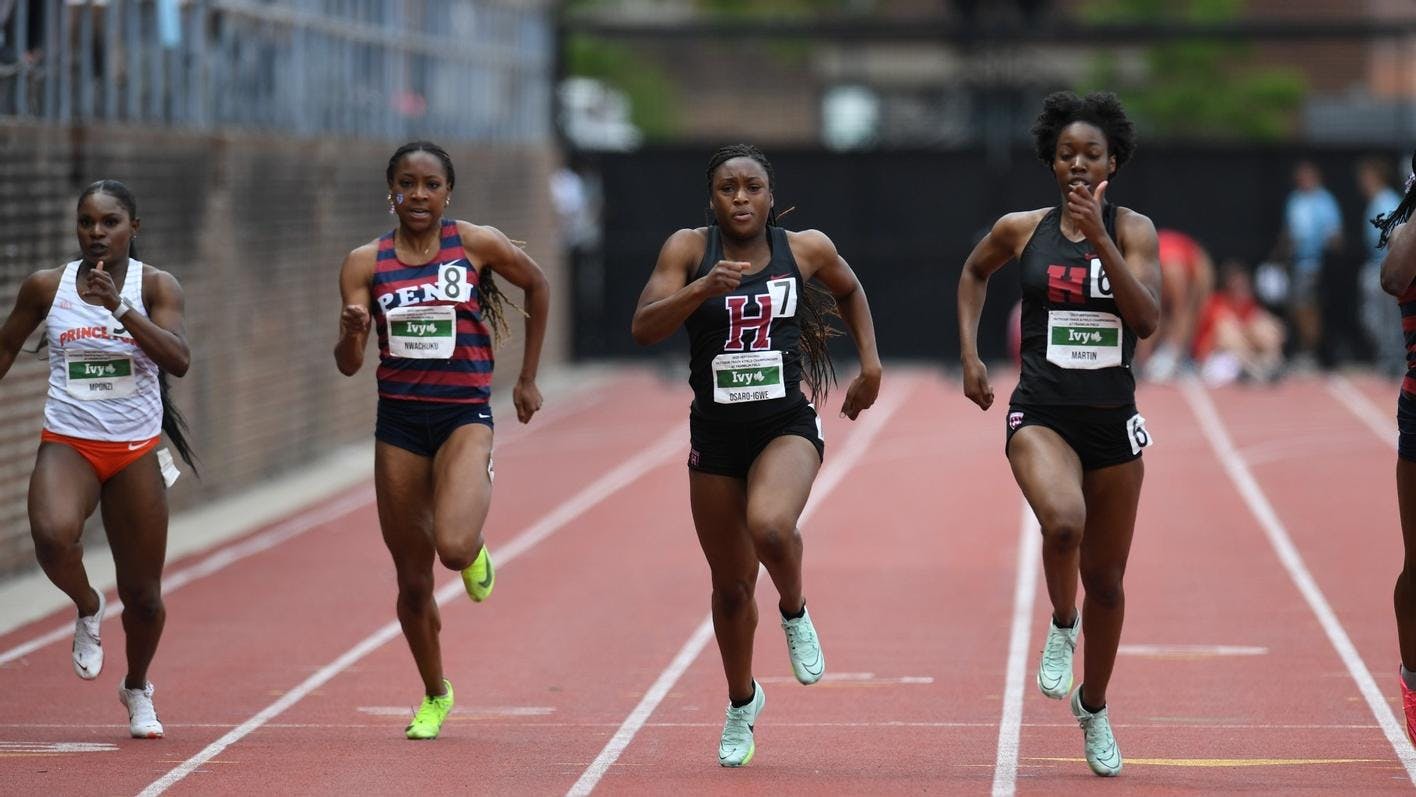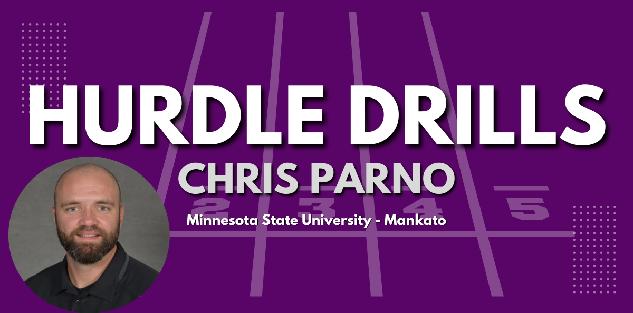Featured courses
- The Ultimate Guide to Coaching Track and Field by Jackson Chlebowy
- How TCU Coach Khadevis Robinson Builds Mental Toughness for Big 12 Track by William Markey
- Two Points of Focus When Coaching and Training Hurdles by Grant Young
- Four Keys to Maximize Winning Potential in a 400m Race by Grant Young
- Three Lessons Every Distance Running Coach Should Know by Grant Young
- Olympic Medalist Jasmine Moore’s Triple Jump Approach Technique Keys by Grant Young
- Build Strong Triple Jump Foundations with 3 Key Drills by William Markey
- Two Cues to Help With Track and Field Relay Handoffs by Grant Young
- Four Shot Put Drills to Help Develop Your Athletes by Grant Young
- Three Training Tips For Coaching 400m Runners by Grant Young
- Four Tips for Teaching the Javelin Throw by Grant Young
- 3 Pole Vault Check Points From Legendary Kansas Coach Tom Hays by Grant Young
- Two Valuable Hammer Throw Training Tips by Grant Young
- 3 Must-Try Offseason Shot Put Drills by William Markey
- Four Essential Tips For Coaching Track Relays and Sprints by Grant Young
- Florida Gators Coach Nic Petersen’s Two Keys for Teaching the Triple Jump by Grant Young
- Three Effective Drills for Improving the Long Jump by Grant Young
- Three Drills for Sprinters That Track Coaches Swear By by Grant Young
- Four Pole Vault Drills All Track and Field Coaches Should Know by Grant Young
- Explosive Track and Field Training to Level Up This Summer by Tyler Rathke
- Throwing Secrets: The Entry by Tyler Rathke
- How to Find an Endurance Athlete’s Proper Training Pace by Grant Young
- The Technique Behind Mykolas Alekna’s Discus World Record by Grant Young
- How to Build a Sprinter's Training Regimen by Grant Young
- How to Teach the Glide Shot Put by Grant Young
- Three Hurdle Drills All Track Coaches Should Know by Grant Young
- How Distance Running Coaches Can Get the Most Out of Their Athletes by Grant Young
- The Technique Behind Mondo Duplantis' Pole Vault World Record by Grant Young
- How to Coach Weightlifting For Increased Speed and Acceleration by Grant Young

How to Build a Sprinter's Training Regimen
- By Grant Young
A lot goes into being a successful sprinter. There’s not only the matter of practicing and performing well during meets, but sprinters also must ensure that they remain injury-free, fuel their bodies correctly with proper nutrition and hydration, and remain coachable and good teammates. And that doesn’t include all of the other life and school obligations a sprinter will have, regardless of their age or level.
And even if a sprinter has all of the natural speed in the world, their performance can crumble if they don’t have a training regimen that emphasizes all of these various factors; which is why it’s absolutely crucial for all sprinters (and all track & field athletes, for that matter) to have a strict, thoughtful, and effective training regimen. And it’s up to their coaches to curate one for them.
And a world-class sprinting coach is willing to help you build the perfect one for your athletes.
Kebba Tolbert is entering his 14th season as the women’s sprints/hurdles and horizontal jumps coach for Harvard and tenth as associate head coach of the squad.
Tolbert helped guide the team to a No. 1 northeast region ranking throughout the entirety of the 2019-20 indoor season. Tolbert helped Kelisa Cain move into second in the Harvard record books in the 60m while helping Katina Martin move into second in the 200m. First-year Mayi Hughes found her way into the record book, ranking fifth all-time in the triple jump.
Being a coach at Harvard, Coach Tolbert knows that a lot of thought must go into an ideal training routine. Thankfully for you, he has done all the studying in advance, and has shared his results in his ‘Building A Sprint Inventory: What Should Be On Your Menu’ course. We’ve taken his best insights and included them for your use below.
Warm Up
Coach Tolbert notes how the warm-up is commonly neglected among sprinting athletes and coaches at lower levels. Or that coaches will instead just instruct their athletes to jog a mile or some other distance in order to warm themselves up. But coaches are short-changing their athletes (and increasing their risk of injury) if they take that lazy approach.
Coach Tolbert believes warm-ups should be much more in-depth than that. He said that, at Harvard, his warm-ups are divided into two different segments: static flexibility and dynamic flexibility.
In other words, static flexibility means stretching while remaining in the same plate, while dynamic flexibility involves using active movement as a form of stretching and warm-up.
Some of the static flexibility exercises that Coach Tolbert suggests are ones that focus on activating the back and core muscles. For example, stretches like the back arch and the spinal roll are extremely valuable for engaging the back muscles.
When it comes to dynamic flexibility, Coach Tolbert recommends drills such as mountain climbers, bicycles, and clockwise hip circles. The goal for both static and dynamic warm-up exercises is that the athlete’s entire body is activated and engaged. The reason why solely jogging to warm up isn’t effective is because it only engages the lower body.
Acceleration
One of the most important physical components for a sprinter’s success is acceleration. Luckily, there are various ways that a coach can help develop their athlete’s acceleration.
One acceleration development exercise that Coach Tolbert suggests is using resistance runs. What Coach Tolbert means by this is having your athlete pull a tire or a sled behind them, to generate resistance and force them to pump their legs and arms to accelerate.
It’s important to exercise caution and safety when doing these sorts of exercises, because they can be dangerous to your athletes if done incorrectly, or too often. What Coach Tolbert suggests is strapping the tire or sled to your athlete’s waist (by a belt, rope, or some other sort of waist harness), and ensuring that the sled is eight to ten yards away from the athlete when they begin their sprint.
While you can add weight to the sled or use a heavier tire as resistance, Coach Tolbert stresses that you don’t want to go too heavy with whatever you’re using. He has found that the sweet spot is somewhere around 10 pounds, to generate proper resistance without making it too tough for your athletes to accelerate.
To start, you can have your athletes do 12 resistance sprints of 30 meters. Starting at a lower distance for higher reps will build a good base from which to improve. After a few weeks of that, your athletes can progress to 10 sprints at 40 meters. From there, they can go to 9 sprints at 50 meters, then 8 sprints at 60 meters when they’re at their peak.
Rethinking
“So often, people think work capacity is how much you run. And when I recruit kids, and I talk to coaches, I tell them, ‘We are not a running program’. Meaning, we are not a program that is going to be doing interval running.”
Coach Tolbert said this quote to emphasize that it’s the total volume that a runner is doing that amounts to their total work capacity. In other words, coaches must account for the running that a sprinter is doing during their meet as part of their training. If you’re training every other day leading up to a meet, doing intense interval training during all of those days, and then having your athlete race once or twice a week, they are going to be overworked.
That’s why Coach Tolbert stresses that interval training should only take place twice a week during the season at most.
These are just a few of the insights that Coach Tolbert imparts during his course. But these tidbits should serve as building blocks for you when you begin crafting a training program for your sprinters.




